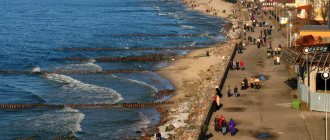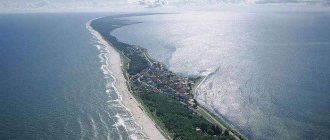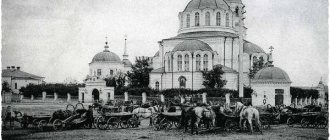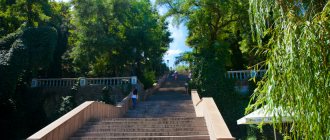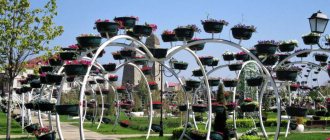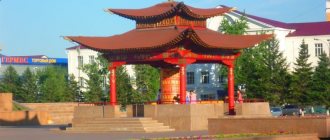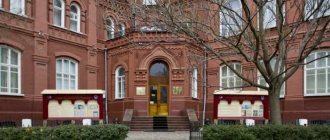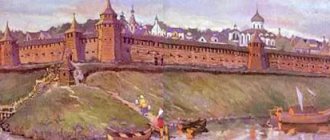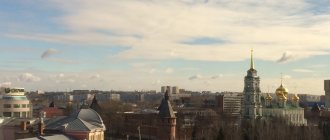Many people, going to the city of Gusev in the Kaliningrad region, have heard little about its attractions. Although there are not many of them here, if you plan your trip in advance and identify the most interesting places, your vacation will be remembered for a long time. By the way, the region belongs to the Russian Federation. It is located outside other constituent entities of the Russian Federation and does not have a single border with them.
Salzburg Church
The church was built of brick in the neoclassical style . Construction took place from 1839 to 1840. Inside there is an organ that was specially brought here from Memel (the territory of present-day Lithuania). In the mid-90s, restoration was carried out. Today it is a functioning Evangelical Lutheran church. It is an object of cultural heritage of the region.
Moose statue
The elk is a symbol of Gusev; its image is depicted on the city’s coat of arms. The statue was made in Berlin by a student of E. Manet in 1911 and donated to the German city of Gumbinnen (present-day Gusev). After the war, the sculpture was transported to the Kaliningrad Zoo, but was returned back in the spring of 1991. The object is under security.
Location: Pobeda Street.
TOP-3 - where to go in Gusev in 1 day
The tour of Gusev begins with the most “high-profile” attractions, which are symbols of the city and its heritage. You can visit these magnificent places in one day.
Former government building of Gumbinnen
- Address: st. Lenina/st. Moscow.
The government building was built in 1911 and has since become the main symbol of the city. Today his image adorns most souvenirs. The original design of the building included two volumes connected by an arched portal. The central building was crowned with an East Prussian eagle, as well as sculptural compositions symbolizing fertility and fishing.
During the Great Patriotic War, the building first lost its tiled roof and later burned down. Restoration began in 1954, but the building’s historical appearance was returned only in the 2000s.
The architectural monument has been restored down to the smallest detail: the dome once again flaunts on the hipped roof, and the stucco decorations of the facade have been completely recreated. The only difference between the modern building and the original is the tower clock, installed in place of the East Prussian eagle. Currently, the building is occupied by research and production.
Church of All Saints
- Address: ave. Lenina, 42B.
The temple was built in 2010 on the supposed site of the Lutheran Church destroyed during the war years. The building is a masterpiece of Russian architecture style. The central volume is decorated with spinning wheels, shoulder blades, gold zakomaras, and is crowned with a five-domed dome sparkling in the sun. On the drums and frieze you can see subtle patterns in the Slavic manner.
A rectangular projection with tiled pilasters and unusual platbands protrudes from the central volume. It ends with an octagonal tent with kokoshniks.
The tented bell tower, made in imitation of the ancient bell towers of central Russia, attracts no less attention. The entrance to the building is decorated with a massive porch with tiles, a gilded cornice and a gable, which serves as a kind of frame for the fresco of All Saints.
All Saints Church is not only a religious building, but also a memorial one. It is part of a historical complex dedicated to the First World War. Currently, a museum exhibition on the same subject is being prepared in the basement of the temple.
Monument to a forgotten war that changed the course of history
- Coordinates on the map: 54.609101, 22.201752.
One of the most impressive and mournful monuments of Gusev is dedicated to the First World War. August 1914 became a real bloody hell for the residents of the city and was remembered as the most terrible time in its history.
In the center of the granite platform is a young soldier caught in the “wheel of fate.” An elderly mother and a young bride extend their hands to him.
The complex is complemented by silhouette sculptures of soldiers of the Russian and German armies, as well as the “Wheel of War” - a ball woven from barbed wire. It symbolizes the cruelty of the war that swept across the country and crushed people's lives.
Coin Garden
The garden was opened in May 2011. On its territory, along the sidewalks, there are models of coins of Tsarist Russia and the Soviet Union, several hundred times larger than their original size.
Also in the garden in 2012, a stone with a memorial tablet was installed, on which an inscription was engraved, informing the visitor that the history of Gusev can be studied from the coins left by different guests.
Location: Ulyanov street.
City climate
The climate is transitional from marine to temperate continental. Mild winters, moderately warm summers. The temperature in January is −2 ºС…−4 ºС, in July - +17 ºС…+20 ºС. The average annual precipitation is about 700 mm per year; with a maximum in August and a minimum in March–April.
- Average annual air temperature - 7.7 °C
- Average wind speed - 3.3 m/s
| Gusev Climate | |||||||||||||
| Index | Jan. | Feb. | March | Apr. | May | June | July | Aug. | Sep. | Oct. | Nov. | Dec. | Year |
| Average maximum, °C | −0,1 | 0,6 | 4,2 | 11,7 | 18,1 | 20,9 | 23,3 | 22,8 | 17,1 | 11,5 | 4,3 | 0,6 | 11,3 |
| Average temperature, °C | −2,9 | −2,4 | 1,0 | 7,3 | 13,1 | 16,2 | 18,7 | 18,4 | 13,4 | 8,4 | 2,1 | −2 | 7,7 |
| Average minimum, °C | −5,8 | −5,6 | −2,1 | 2,8 | 7,3 | 10,8 | 13,4 | 13,6 | 9,7 | 5,5 | −0,3 | −4,7 | 3,8 |
| Source: [kaliningrad-meteo.ru/gusev/pivot/temperature Meteostatistics] | |||||||||||||
Monument to S.I. Gusev
On the eve of Victory Day 2010, a monument was solemnly unveiled in Gusev, which is a gratitude for the courage and courage of the hero of the Great Patriotic War - S.I. Gusev. It was under his command that in the winter of 1945 it was possible to break through the enemy’s defenses. The captain died in this battle. The author of the monument was the sculptor V. Kopych .
In addition, a memorial plaque was installed on the building of the railway station to the war hero. And in the courtyard of the high school on the street. Yu. Smirnova, a few years ago his bronze bust appeared.
Pobeda and Z Kosmodemyanskaya streets (at the intersection)
Comments
Yana
13.02.18 12:53
Thank you very much, Natalya! I walked with you through the sights of Gusev. The story of someone living there and nearby, in Kaliningrad, is always different from the stories of travelers and tourists. Thanks again!
- answer
nataliyak
14.02.18 22:16
Thank you, Yana, for your kind words. I really hope that my stories about interesting places in the Kaliningrad region will motivate people from “greater Russia” to come to us. Although the popularity of seaside towns is growing every year (this year we were shocked to see more people walking on the Zelenogradsk embankment during the winter holidays than usually happens in the summer), few people get to the east of the region, and there is also a lot of interesting stuff there..
- answer
yana
13.02.18 16:29
They motivate, Natalya, how they motivate! We miss Svetlogorsk very much. Polina often remembers. Thank you for reminding me of your warm, sunny and green places.
- answer
Shooter's house
Construction of the concert building began in 1911. The authors of the project were architects from Königsberg. As planned, the large hall was supposed to accommodate up to 1,200 spectators at a time. Another small hall with 200 seats was built on the second floor.
There were several rooms for artists and backstage workers. A shooting range was installed for the entertainment of German citizens. During wartime, the building was used by Soviet soldiers as a garrison. Since 1950, the House of Officers has been located here.
Location: Artilleriyskaya street - 10.
Monument “In Memory of the Forgotten War that Changed the Course of History”
It was installed at this location in the summer of 2014. The monument consists of three figures: a sculpture of a crucified soldier, next to whom stand a mother and a widow. Their faces show sorrow for all the soldiers who did not return from the war. The author of the monument is the sculptor and artist M. M. Shemyakin.
Location: Residential area of Technopolis GS.
Excerpt characterizing Gusev (city)
Finally, the sovereign leaves the army, and as the only and most convenient pretext for his departure, the idea is chosen that he needs to inspire the people in the capitals to initiate a people's war. And this trip of the sovereign and Moscow triples the strength of the Russian army. The sovereign leaves the army in order not to hamper the unity of power of the commander-in-chief, and hopes that more decisive measures will be taken; but the position of the army command is even more confused and weakened. Bennigsen, the Grand Duke and a swarm of adjutant generals remain with the army in order to monitor the actions of the commander-in-chief and arouse him to energy, and Barclay, feeling even less free under the eyes of all these sovereign eyes, becomes even more careful for decisive actions and avoids battles. Barclay stands for caution. The Tsarevich hints at treason and demands a general battle. Lyubomirsky, Branitsky, Wlotsky and the like are inflating all this noise so much that Barclay, under the pretext of delivering papers to the sovereign, sends the Poles as adjutant generals to St. Petersburg and enters into an open fight with Bennigsen and the Grand Duke. In Smolensk, finally, no matter how Bagration wished it, the armies are united. Bagration drives up in a carriage to the house occupied by Barclay. Barclay puts on a scarf, goes out to meet him and reports to the senior rank of Bagration. Bagration, in the struggle of generosity, despite the seniority of his rank, submits to Barclay; but, having submitted, she agrees with him even less. Bagration personally, by order of the sovereign, informs him. He writes to Arakcheev: “The will of my sovereign, I cannot do it together with the minister (Barclay). For God's sake, send me somewhere, even to command a regiment, but I can’t be here; and the entire main apartment is filled with Germans, so it’s impossible for a Russian to live, and there’s no point. I thought I was truly serving the sovereign and the fatherland, but in reality it turns out that I am serving Barclay. I admit, I don’t want to.” The swarm of Branitskys, Wintzingerodes and the like further poisons the relations of the commanders-in-chief, and even less unity emerges. They are planning to attack the French in front of Smolensk. A general is sent to inspect the position. This general, hating Barclay, goes to his friend, the corps commander, and, after sitting with him for a day, returns to Barclay and condemns on all counts the future battlefield, which he has not seen. While there are disputes and intrigues about the future battlefield, while we are looking for the French, having made a mistake in their location, the French stumble upon Neverovsky’s division and approach the very walls of Smolensk. We must take on an unexpected battle in Smolensk in order to save our messages. The battle is given. Thousands are being killed on both sides. Smolensk is abandoned against the will of the sovereign and all the people. But Smolensk was burned by the residents themselves, deceived by their governor, and the ruined residents, setting an example for other Russians, go to Moscow, thinking only about their losses and inciting hatred of the enemy. Napoleon moves on, we retreat, and the very thing that was supposed to defeat Napoleon is achieved. The day after his son’s departure, Prince Nikolai Andreich called Princess Marya to his place. - Well, are you satisfied now? - he told her, - she quarreled with her son! Are you satisfied? That's all you needed! Are you satisfied?.. It hurts me, it hurts. I'm old and weak, and that's what you wanted. Well, rejoice, rejoice... - And after that, Princess Marya did not see her father for a week. He was sick and did not leave the office. To her surprise, Princess Marya noticed that during this time of illness the old prince also did not allow m lle Bourienne to visit him. Only Tikhon followed him. A week later, the prince left and began his old life again, being especially active in buildings and gardens and ending all previous relations with m lle Bourienne. His appearance and cold tone with Princess Marya seemed to say to her: “You see, you made it up about me, lied to Prince Andrei about my relationship with this Frenchwoman and quarreled me with him; and you see that I don’t need either you or the Frenchwoman.” Princess Marya spent one half of the day with Nikolushka, watching his lessons, herself giving him lessons in the Russian language and music, and talking with Desalles; she spent the other part of the day in her quarters with books, an old nanny, and with God's people, who sometimes came to her from the back porch. Princess Marya thought about the war the way women think about war. She was afraid for her brother, who was there, horrified, without understanding her, by human cruelty, which forced them to kill each other; but she did not understand the significance of this war, which seemed to her the same as all previous wars. She did not understand the significance of this war, despite the fact that Desalles, her constant interlocutor, who was passionately interested in the progress of the war, tried to explain his thoughts to her, and despite the fact that the people of God who came to her all spoke with horror in their own way about popular rumors about the invasion of the Antichrist, and despite the fact that Julie, now Princess Drubetskaya, who again entered into correspondence with her, wrote patriotic letters to her from Moscow. “I am writing to you in Russian, my good friend,” wrote Julie, “because I have hatred for all the French, as well as for their language, which I cannot hear spoken... We in Moscow are all delighted through enthusiasm for our beloved emperor. My poor husband endures labor and hunger in Jewish taverns; but the news I have makes me even more excited. You probably heard about the heroic feat of Raevsky, who hugged his two sons and said: “I will die with them, but we will not waver!” And indeed, although the enemy was twice as strong as us, we did not waver. We spend our time as best we can; but in war, as in war. Princess Alina and Sophie sit with me all day long, and we, unfortunate widows of living husbands, have wonderful conversations over lint; only you, my friend, are missing... etc. Mostly Princess Marya did not understand the full significance of this war because the old prince never talked about it, did not acknowledge it and laughed at Desalles at dinner when he talked about this war. The prince's tone was so calm and confident that Princess Marya, without reasoning, believed him. Throughout the month of July, the old prince was extremely active and even animated. He also laid out a new garden and a new building, a building for the courtyard workers. One thing that bothered Princess Marya was that he slept little and, having changed his habit of sleeping in the study, changed the place of his overnight stays every day. Either he ordered his camp bed to be set up in the gallery, then he remained on the sofa or in the Voltaire chair in the living room and dozed without undressing, while not m lle Bourienne, but the boy Petrusha read to him; then he spent the night in the dining room. On August 1, a second letter was received from Prince Andrei. In the first letter, received shortly after his departure, Prince Andrei humbly asked his father for forgiveness for what he had allowed himself to say to him, and asked him to return his favor to him. The old prince responded to this letter with an affectionate letter and after this letter he alienated the Frenchwoman from himself. Prince Andrei's second letter, written from near Vitebsk, after the French occupied it, consisted of a brief description of the entire campaign with a plan outlined in the letter, and considerations for the further course of the campaign. In this letter, Prince Andrei presented his father with the inconvenience of his position close to the theater of war, on the very line of movement of the troops, and advised him to go to Moscow. At dinner that day, in response to the words of Desalles, who said that, as heard, the French had already entered Vitebsk, the old prince remembered Prince Andrei’s letter. “I received it from Prince Andrei today,” he said to Princess Marya, “didn’t you read it?” “No, mon pere, [father],” the princess answered fearfully. She could not read a letter that she had never even heard of. “He writes about this war,” said the prince with that familiar, contemptuous smile with which he always spoke about the real war. “It must be very interesting,” said Desalles. - The prince is able to know... - Ah, very interesting! - said Mlle Bourienne. “Go and bring it to me,” the old prince turned to Mlle Bourienne. – You know, on a small table under a paperweight. M lle Bourienne jumped up joyfully. “Oh no,” he shouted, frowning. - Come on, Mikhail Ivanovich. Mikhail Ivanovich got up and went into the office. But as soon as he left, the old prince, looking around uneasily, threw down his napkin and went off on his own. “They don’t know how to do anything, they’ll confuse everything.” While he walked, Princess Marya, Desalles, m lle Bourienne and even Nikolushka silently looked at each other. The old prince returned with a hasty step, accompanied by Mikhail Ivanovich, with a letter and a plan, which he, not allowing anyone to read during dinner, placed next to him. Going into the living room, he handed the letter to Princess Marya and, laying out the plan of the new building in front of him, which he fixed his eyes on, ordered her to read it aloud. After reading the letter, Princess Marya looked questioningly at her father. He looked at the plan, obviously lost in thought. - What do you think about this, prince? – Desalles allowed himself to ask a question. - I! I!.. - the prince said, as if awakening unpleasantly, without taking his eyes off the construction plan. - It is quite possible that the theater of war will come so close to us... - Ha ha ha! Theater of War! - said the prince. “I said and say that the theater of war is Poland, and the enemy will never penetrate further than the Neman. Desalles looked with surprise at the prince, who was talking about the Neman, when the enemy was already at the Dnieper; but Princess Marya, who had forgotten the geographical position of the Neman, thought that what her father said was true. - When the snow melts, they will drown in the swamps of Poland. “They just can’t see,” said the prince, apparently thinking about the campaign of 1807, which seemed so recent. “Bennigsen should have entered Prussia earlier, things would have taken a different turn...” “But, prince,” said Desalles timidly, “the letter talks about Vitebsk...” “Ah, in the letter, yes...” the prince said dissatisfied, “yes... yes...” “His face suddenly took on a gloomy expression. He paused. - Yes, he writes, the French are defeated, which river is this? Desalles lowered his eyes. “The prince doesn’t write anything about this,” he said quietly. - Doesn’t he write? Well, I didn’t make it up myself. - Everyone was silent for a long time. “Yes... yes... Well, Mikhaila Ivanovich,” he suddenly said, raising his head and pointing to the construction plan, “tell me how you want to redo it... Mikhail Ivanovich approached the plan, and the prince, having talked with him about the plan for the new building, angrily Having looked at Princess Marya and Desalles, he went to his room. Princess Marya saw Desalles' embarrassed and surprised gaze fixed on her father, noticed his silence and was amazed that the father had forgotten his son's letter on the table in the living room; but she was afraid not only to speak and ask Desalles about the reason for his embarrassment and silence, but she was afraid to even think about it. In the evening, Mikhail Ivanovich, sent from the prince, came to Princess Marya for a letter from Prince Andrei, which was forgotten in the living room. Princess Marya submitted the letter. Although it was unpleasant for her, she allowed herself to ask Mikhail Ivanovich what her father was doing. “They’re all busy,” said Mikhail Ivanovich with a respectfully mocking smile that made Princess Marya turn pale. – They are very worried about the new building. “We read a little, and now,” Mikhail Ivanovich said, lowering his voice, “the bureau must have started working on the will.” (Recently, one of the prince’s favorite pastimes was working on the papers that were supposed to remain after his death and which he called a will.) - And Alpatych is sent to Smolensk? - asked Princess Marya. - Why, he’s been waiting for a long time. When Mikhail Ivanovich returned with the letter to the office, the prince, wearing glasses, with a lampshade over his eyes and a candle, was sitting at the open bureau, with papers in his far-off hand, and in a somewhat solemn pose was reading his papers (remarks, as he called them), which were to be delivered to the sovereign after his death. When Mikhail Ivanovich entered, there were tears in his eyes, memories of the time when he wrote what he was now reading. He took the letter from Mikhail Ivanovich’s hands, put it in his pocket, put away the papers and called Alpatych, who had been waiting for a long time. On a piece of paper he wrote down what was needed in Smolensk, and he, walking around the room past Alpatych, who was waiting at the door, began to give orders. - First, postal paper, do you hear, eight hundred, according to the sample; gold-edged... a sample, so that it will certainly be according to it; varnish, sealing wax - according to a note from Mikhail Ivanovich. He walked around the room and looked at the memo. “Then personally give the governor a letter about the recording. Then they needed bolts for the doors of the new building, certainly of the style that the prince himself had invented. Then a binding box had to be ordered for storing the will. Giving orders to Alpatych lasted more than two hours. The prince still did not let him go. He sat down, thought and, closing his eyes, dozed off. Alpatych stirred. - Well, go, go; If you need anything, I will send it.
Gusevsky Museum of History and Local Lore named after. A.M. Ivanova
It was founded in the winter of 1992. The museum houses several collections that are dedicated to the pre-war history of the region, the First and Second World Wars. There is a permanent archaeological exhibition. Before the creation of the museum, a police station, a financial department, and an orphanage were located within the walls of the building at various times. Is a cultural heritage site. Ticket price: 150 rubles .
Location: Moskovskaya street - 36.
general information
Gusev, a historical city, is located in the region . Before the war it had the German name Gumbinnen. The first written reservation about this area was mentioned in 1732; at that time, the territory of present-day Gusev was settled by settlers from Austria.
Now it is a city engaged in industry. It has a very rich history; both the Prussians and the Germans managed to visit here - this can be seen in the colorful architecture of the pre-war period.
In 1538, in the place where the city of Gusev is now located in the Kaliningrad region, the Kulligkemen people lived. At the end of the 17th century, a large number of people from the Austrian part - Salzburg - went to the settlement of Gumbinnen. There is an opinion that the first peoples of these places appeared at the very dawn of the human era , but the city appeared only in the 18th century and was the central district of the Prussian peoples from the east.
In the 16th century, the appearance of settlements on the river strip “Pisse” is mentioned, which soon began to be called the city of Gumbinnen. 1725 is the official date of the appearance of Gumbinnen.
In February 1759, he began to submit to the Russian government. It was in this city that French commanders developed tactics for further attacks on the Russian Empire. During the Second World War, the Gumbinnen operation was created here to seize the northern territories. In 1947 the city was given the name Gusev.
The local climate is similar to the Baltic, warm in summer and moderate in winter - which is typical for temperate continental climates with transitional features.
Gusev, first of all, is the center of industrial organization:
- Before the start of the war, cars were produced in the city for rural needs.
- It also had a gas plant where the electrical components of Opel cars were assembled.
- They made bricks and furniture products.
- It also has food factories - factories for the production of beer and butter.
- Even with the arrival of the Soviet authorities, the plant continued to function, but due to perestroika, much was lost. And only in our time did factories and production begin to be restored.
Recently, a water purification plant was rebuilt, a television equipment production plant was put into operation, a house-building establishment and a cardboard factory were opened. There are also railway branches in Gusev that belong to the lines of Lithuanian railways.
Monument "Bayonet Attack"
This is a sculpture of a non-commissioned officer of the army of the Russian Empire, who goes on the attack. Local sculptors, artists and architects worked on the creation of the memorial for several years. The opening took place in the summer of 2014. The monument is dedicated to the Battle of Gumbinnen in 1914.
Location: Zoya Kosmodemyanskaya street - 12.
Beautiful Gusev bridges - the best places for photos
An interesting touch to the landscape of Gusev is added by bridges, which provide comfortable movement, but at the same time are decorations of the city and historical monuments.
Royal Bridge
- Address: st. Victory.
The Royal Bridge was built in 1734 by order of King Frederick William I. That is why it was called “Royal Bridge”. Both sides of the bridge are decorated with forged fences with granite pillars.
At the ends of the bridge there are pedestals with slabs on which you can read a short information about the history of this place. At night, sculptural lanterns are lit along the bridge, which gives it an even more solemn appearance.
Pedestrian Bridge of Heroes
- Address: Zoya Kosmodemyanskaya street.
The Heroes Pedestrian Bridge is part of the First World War War Memorial Complex. In 2016, it was thrown across the Pissa River. Brick podiums with slab-lined platforms rise on the banks.
The bridge is decorated with pylons at both ends. Parallel cast-iron balustrades of mourning black color stretch along the entire length. After crossing the bridge, tourists will find themselves on the square of the All Saints Church.
Chapel of St. Andrew the Apostle
The building was built with money from the widow of a German officer at the beginning of the 20th century, at the entrance to the cemetery.
After the Great Patriotic War it was not used. restoration work was organized in the late 90s, then it was transferred to the disposal of the Roman Catholic parish of St. Andrew the Apostle. In 2007, the chapel received the status of a cultural heritage site.
Location: Krasnoarmeyskaya street - 13a.
Monument to the regional newspaper “For Valiant Labor”
This is the first monument in Russia dedicated to the newspaper. Made of bronze. The opening was timed to coincide with the 65th anniversary of the founding of the editorial office of the local newspaper “For Valiant Labor”. It was installed in the city center in November 2012 with the money of employees.
Location: Ulyanov street - 10.
Bust of Zoya Kosmodemyanskaya
In front of the bust of the Hero of the Soviet Union, flower beds are laid out and thujas are planted. The image of the Gold Star medal is fixed on the pedestal. All year round there are fresh flowers and wreaths brought by local residents and representatives of the city administration. The monument was moved to this place in 2012.
Location: Timiryazeva street - 4.
